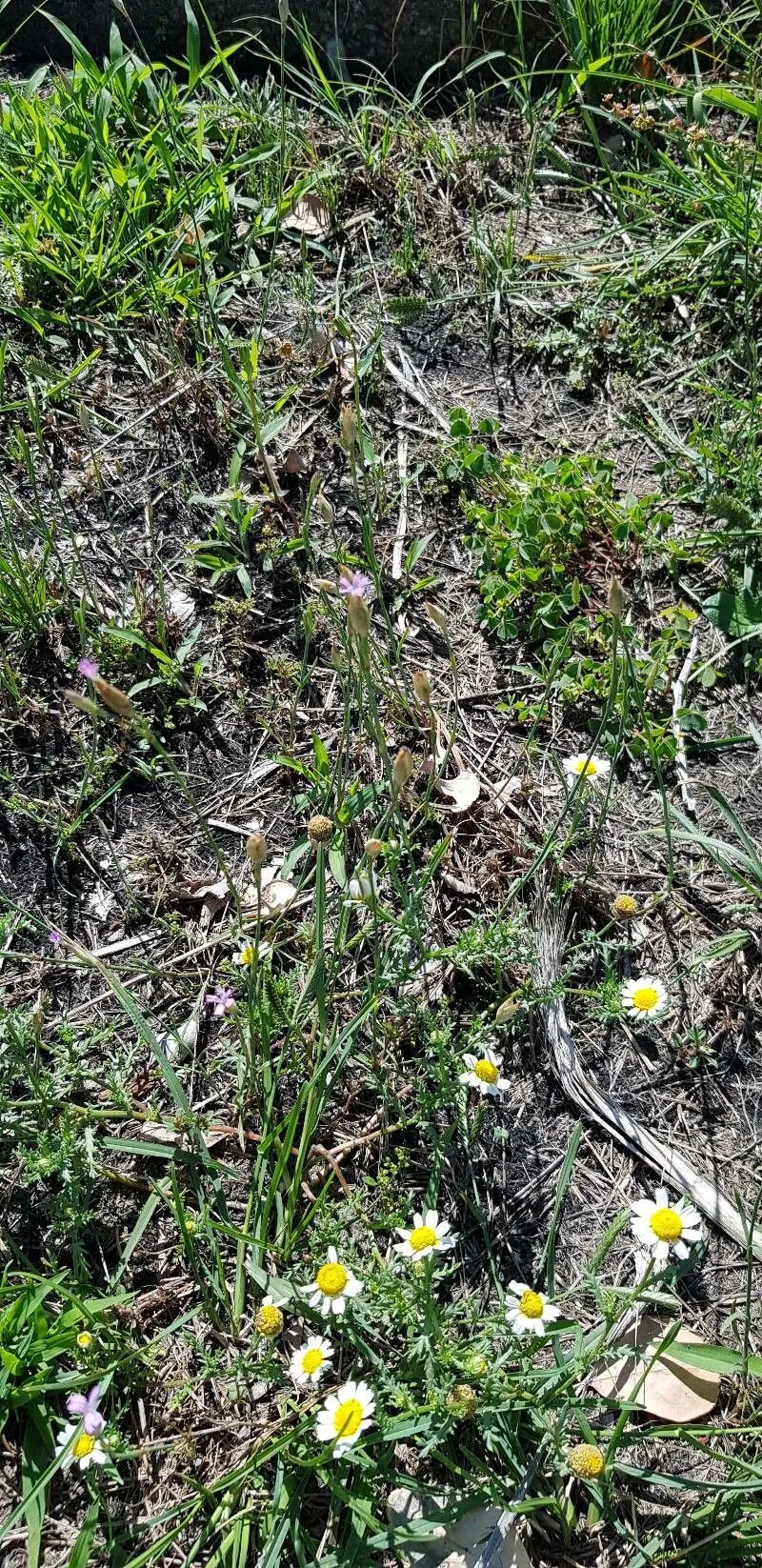
Author: (L.) P.W.Ball & Heywood
Bibliography: Bull. Brit. Mus. (Nat. Hist.), Bot. 3: 161 (1964)
Year: 1964
Status: accepted
Rank: species
Genus: Petrorhagia
Vegetable: False
Observations: Europe to W. & N. Iran, NW. Africa
Childing pink, known scientifically as Petrorhagia prolifera, is a captivating species belonging to the Caryophyllaceae family. This plant, first referenced in the scientific literature in 1964 by authors L. and P.W. Ball & Heywood, boasts a native range that spans much of Europe, extends into Western and Northern Iran, and covers parts of Northwestern Africa.
This hardy perennial thrives in a variety of environments, from meadows to rocky outcrops, often found flourishing in regions characterized by temperate climates. Its delicate, pink-hued flowers emerge in profusion during the blooming season, bringing a gentle splash of color to the landscape. The blooms of Childing pink are not only visually appealing but also play a crucial role in their ecosystems, attracting a host of pollinators, including bees and butterflies.
The plant’s slender, wiry stems support the clusters of blossoms, which are small but numerous, giving the plant an overall airy and delicate appearance. The leaves are opposite, narrow, and somewhat hairy, contributing to the plant’s ability to conserve water and thrive in less-than-ideal soil conditions.
Characteristic of many Caryophyllaceae family members, Childing pink exhibits a resilience that allows it to endure a range of climates and soil types, making it a favorite among gardeners seeking low-maintenance, yet visually rewarding additions to their floral collections. Its ability to self-seed ensures that once established, it can persist and even expand its presence without requiring significant upkeep.
The ecological contributions of Petrorhagia prolifera are significant. Beyond its role in beautifying temperate landscapes, this plant serves as a food source for various insects, thereby playing a part in the larger food webs of its native habitats. Its presence can often be an indicator of healthy, undisturbed habitats, marking areas that have not been overly affected by agricultural or urban development.
In summary, Childing pink is a resilient and aesthetically pleasing plant that enriches the biodiversity of its native regions. Whether encountered in the wilds of Europe or the diverse landscapes of Iran and Africa, its flowers stand as a testament to nature’s intricate beauty and adaptability.
Eng: childing pink, proliferous pink, childing-pink, proliferous-pink, prolific petrorhagia
Dan: knopnellike
Deu: nelkenköpfchen, sprossende felsennelke, sprossendes nelkenköpfchen
Swe: hylsnejlika
Fra: oeillet prolifère, pétrorhagie prolifère, tunique prolifère
Nld: slanke mantelanjer
Nob: knoppnellik
Nno: knoppnellik
Cym: penigan toreithiog, penigau toreithiog
En: Childing pink, Proliferous Pink, Childing-pink, Proliferous-pink, Prolific petrorhagia
Ca: Clavellet prolífer
Da: Knopnellike
Nl: Slanke mantelanjer
Fr: Oeillet prolifère, Pétrorhagie prolifère, Tunique prolifère, Petrorhagie prolifère
De: Nelkenköpfchen, Sprossende Felsennelke, Sprossendes Nelkenköpfchen
It: Garofanina annuale
Nb: Knoppnellik
Nn: Knoppnellik
Sv: Hylsnejlika
Cy: Penigan Toreithiog, Penigau Toreithiog
Taken Jun 20, 2019 by Pep Secem (cc-by-sa)
Taken May 30, 2018 by Fejul Xeto (cc-by-sa)
Taken May 30, 2018 by Fejul Xeto (cc-by-sa)
Taken May 25, 2018 by 1 (cc-by-sa)
Taken May 30, 2018 by Fejul Xeto (cc-by-sa)
Taken Aug 5, 2013 by Tela Botanica − Florent Beck (cc-by-sa)
Taken Aug 5, 2013 by Tela Botanica − Florent Beck (cc-by-sa)
Taken Aug 5, 2013 by Tela Botanica − Florent Beck (cc-by-sa)
Taken Aug 5, 2013 by Tela Botanica − Florent Beck (cc-by-sa)
Taken Jun 28, 2022 by Tristan Jaton-Maria (cc-by-sa)
Taken Aug 5, 2021 by Henk Van Lottum (cc-by-sa)
Taken May 14, 2021 by Magalie Delalande (cc-by-sa)
Taken Jun 4, 2021 by Patrice Nodet (cc-by-sa)
Taken Aug 10, 2020 by Sylvain Piry (cc-by-sa)
Taken Feb 27, 2022 by Frank Langer (cc-by-sa)
Taken Aug 7, 2021 by GT Miriam (cc-by-sa)
Taken Jun 8, 2014 by Tela Botanica − Jean-Luc Gorremans (cc-by-sa)
Taken May 2, 2022 by Lars Mannzen (cc-by-sa)
Taken Sep 11, 2016 by Yoan MARTIN (cc-by-sa)
Taken Aug 5, 2013 by Tela Botanica − Florent Beck (cc-by-sa)
Taken Sep 11, 2016 by Yoan MARTIN (cc-by-sa)
Taken Sep 11, 2016 by Yoan MARTIN (cc-by-sa)
Taken Jul 2, 2017 by Carlos Villasante (cc-by-sa)
Taken Sep 11, 2016 by Yoan MARTIN (cc-by-sa)
Taken May 2, 2022 by Lars Mannzen (cc-by-sa)
Taken Apr 30, 1849 by Tela Botanica − Herbier PONTARLIER-MARICHAL (cc-by-sa)
Taken Jul 15, 2008 by Photoflora – Benoit BOCK (©)
Taken Sep 2, 1894 by Tela Botanica − Anne-Marie GRIMAUD (cc-by-sa)
Taken Jul 16, 2020 by Roland Pistor (cc-by-sa)
Taken Jul 6, 2019 by Roberto Dessì (cc-by-sa)
© copyright of the Board of Trustees of the Royal Botanic Gardens, Kew.
© copyright of the Board of Trustees of the Royal Botanic Gardens, Kew.
© copyright of the Board of Trustees of the Royal Botanic Gardens, Kew.
Growth habit: Forb/herb
Bloom months: [‘may’, ‘jun’, ‘jul’, ‘aug’, ‘sep’, ‘oct’]
Family: Myrtaceae Author: (F.Muell.) K.D.Hill & L.A.S.Johnson Bibliography: Telopea 6: 402 (1995) Year: 1995 Status:…
Family: Rubiaceae Author: Pierre ex A.Froehner Bibliography: Notizbl. Bot. Gart. Berlin-Dahlem 1: 237 (1897) Year:…
Family: Sapindaceae Author: Koidz. Bibliography: J. Coll. Sci. Imp. Univ. Tokyo 32(1): 38 (1911) Year:…
Family: Asteraceae Author: A.Gray Bibliography: Pacif. Railr. Rep.: 107 (1857) Year: 1857 Status: accepted Rank:…
Family: Fabaceae Author: Medik. Bibliography: Vorles. Churpfälz. Phys.-Ökon. Ges. 2: 398 (1787) Year: 1787 Status:…
Family: Aspleniaceae Author: (Cav.) Alston Bibliography: Bull. Misc. Inform. Kew 1932: 309 (1932) Year: 1932…